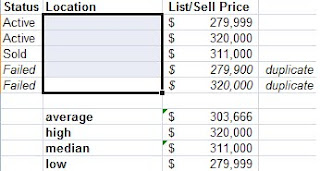Jessie's note: The author mentions America, and while you all know that I'm Canadian, I beleive that the themes he talks about are applicable in all of North America.
The fact is that most Americans will earn several million dollars during the course of their professional careers. That is a lot of money!! Unfortunately, very few will actually retire comfortably, but the truth is that it is rarely ever due to not making enough money. Usually, it is due to improperly managing the money one does make.
The truth is that managing money in a frugal manner in America is a very hard thing to do! It is a real challenge to cut back on spending when our American culture is based on consumerism. Every day all day long we are constantly bombarded with advertisements and marketing efforts that are shrewdly focused on bilking us out of our hard-earned cash. But the good news is that with some determination and discipline, a person can break out of the consumer-based money-management behaviors that cause many Americans to not save. No matter how deep your financial hole is, you can get out!
There are two primary poisons that try to kill our financial progress—debts and reckless spending. Reckless spending can be cured immediately with the proper amount of personal will, but debts, of course, must be paid off over time. The first step to personal financial success is determining to cut back on your spending. A budget is 100% essential. The second step is to address your debts. Most Americans have a high level of credit card debt, and these must be addressed immediately. The first step in addressing them is to stop using them! The personal finance success formula is simple—cut back on spending, stop using credit cards, build up an emergency savings account, and then use excess savings that are a result of decreased spending to pay off debt. It really is that simple. Implementing this formula is where the difficulty is.
In this article, we are discussing the importance of building an emergency savings fund. Most personal finance experts agree that there should be at least $1,000 in this account. This account serves one major purpose. It is designed to help you never use credit cards for unexpected expenses. If the car gets a flat tire, or you have an unexpected doctor visit that requires a co-pay, or any other unexpected expense occurs, you should always have a small cushion of savings that can finance these expenses. This will not only give you peace of mind, but it will also help to solidify your progress of not accumulating any more debt.
An emergency savings fund should be built before you jump headlong into paying off credit cards, college loans, car loans, and the mortgage. Once you cut back on expenses, you should direct that extra money toward building the $1,000 emergency fund. The easiest way to cut back on expenses is to keep track of all your expenses for one month by logging them in either a journal or an Word or Excel file. Then, at the end of the month take an honest and objective look at where you are spending your hard-earned money. A little common sense will make it clear where you are spending too much money.
As unexpected expenses arise, you can then dip into your emergency savings to make ends meet. When you have to make a withdrawal to cover an expense, then your next objective should be to build your savings back up to $1,000 as soon as possible. Building and faithfully maintaining this emergency savings fund should not be seen as an “option.” It really is essential that you have a financial buffer in place to help in time of need.






